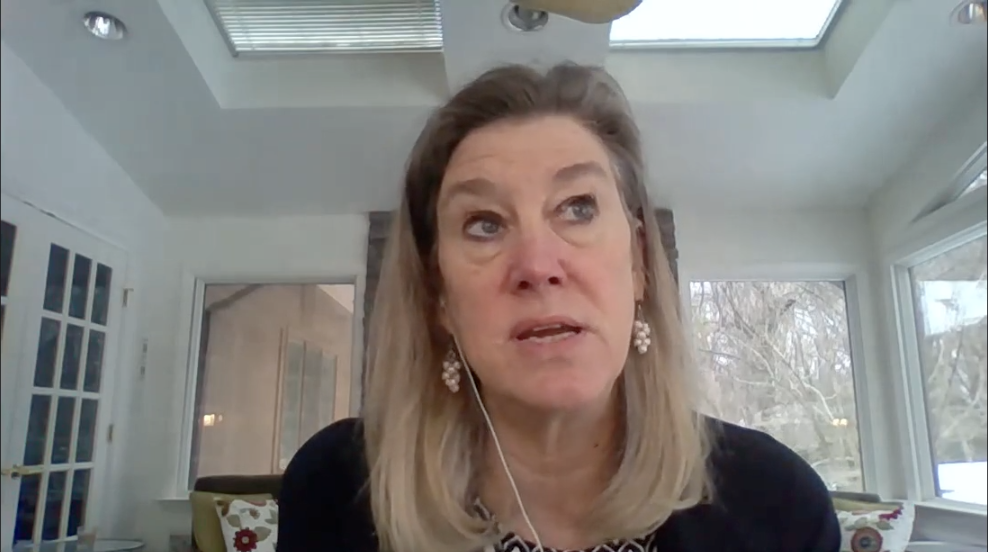As the moderator of the New Era AV/IT Webcast Series, hosted by AV Technology, I have the pleasure of talking with our panelists twice before the live event. We always have a full-panel prep call for everyone to meet each other and begin discussing the topic.
Early on, I realized these full-hour sessions were so packed with inspiration, innovative thinking, and some not ready for primetime comments that with permission, I decided to record the sessions and share some highlights.
Kay Sargent, senior principal, director of WorkPlace at HOK, and Christopher Jaynes, founder and CTO at Mersive, are New Era AV/IT Webcast Series regulars. They will be participating in the Reconfiguring the Workplace for Collaboration webcast, Wednesday, August 11, 2021, at 2:00 p.m. ET. Register here! You’re not going to want to miss this.

One Size Mis-fits All
“We’re seeing a whole variety of things,” said Kay Sargent, senior principal, director of WorkPlace at HOK. “And that’s good because one size mis-fits all. We are seeing an official embrace of a hybrid model. I say ‘official’ embrace because we have organically been moving toward this for the last 20 years. The thing that’s unique now is that we have an opportunity for the entire world to rethink work for the first time in a long time. It’s not just the workplace; it’s the workforce, and it’s work in general.
“What we’re seeing is they want to give people more options and choices and control because ultimately it comes down to people. We must put the people first. We must think about, ‘How are we going to really adopt a human-centered approach to all this?’ Technology is a tool that can aid in that, but it really must be driven from, ‘What are people comfortable with?’
“We’re going to see companies that are embracing a lot more remote work. Now I’m going to call a little BS on some of these companies that are saying, ‘Everybody can go home and work remotely forever, and we’ll see you whenever.’ A lot of tech companies—their whole culture is about rapid innovation, and they thrive on getting people together. All their spaces are designed around bringing people together.
“There’s a difference between innovation and productivity. Everybody is so focused on productivity while the question is, “What are you producing?’ What companies are really worried about today is, ‘Can we innovate fast enough even to stay relevant?’ Innovation is suffering right now. Ideas often come to us when we’re on our own, but they germinate and come to fruition when we’re together—when we build that social capital. We are running on borrowed social capital from when we left the office.”

My Own Device Ecosystem
“We may be over-subscribing to this word ‘productivity,’” said Christopher Jaynes, founder and CTO at Mersive. “Part of the challenge is that we’re trading things like serendipity for personal productivity, which is fine maybe for the short-term, but it’s not something you want to do as a company for a very long time. We’ve shone a light on the questions, ‘Are certain work styles, or certain work goals more amenable in certain spaces, with certain types of furniture, with a certain technology landscape that surrounds you, and with certain colleagues?’
“The importance of infrastructure will always be there, but the importance of a user having control and flexibility of a space—or how they find a space to meet and how they find their colleagues to collaborate with if they happen to be on-campus. Those things, I think, are going to accelerate dramatically. It’s like we got into this time machine and got out five years in the future, and all those things have to be here—like now.
“I’m really a big fan of the concept of BYOM—Bring Your Own Meeting. It’s the concept of, ‘I’m engaged with my own device ecosystem.’ When I show up to a room that’s got a great Bose sound system, great mics, and a beautiful 80-inch screen, and I want to make use of that with my team, I better be able to use that laptop somehow. So, for me, what BYOM means, and what we’ve been developing here at Mersive, is the idea that the laptop latches to the room system in a way that’s transparent to the user—as though I ran around and plugged in 10 different cables to make all that happen or interacted with a specialized panel on the wall. That is key because otherwise, you’re wrapping all that great technology with a bad user experience, which is just off-putting.
“Analytics has to play a big role, though. You can’t just develop technology and leave it at that. Using data and analytics to help that manager understand, ‘Wait a minute. If I’m seeing a pattern emerge every Tuesday morning that remote participants are regularly scoring their engagement lower,’ then that is a super valuable tool. Workplace analytics, I think, will have a big future now that was kind of ignored over the last decade. It’s a big deal.
“We need to think about those challenges that are coming—and how can we address some of those things by tweaking features that were already in flight or deliver completely new technologies to get people back together and re-engage. It’s one of the grand challenges of AV.’

